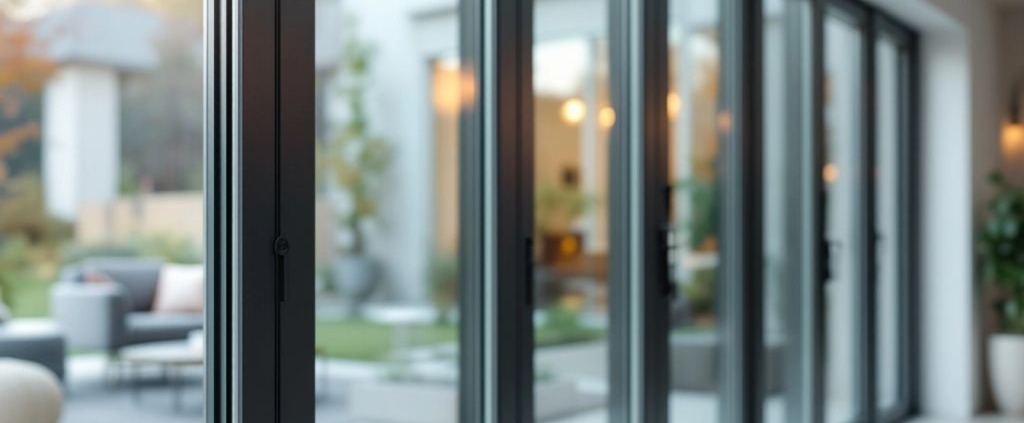What are the UK Planning Regulations to Consider When Installing Bi-Fold Doors
Installing bi-fold doors can enhance your home by adding light and space. However, before you proceed, it’s essential to understand the planning regulations that may apply. From knowing when to seek planning permission to understanding building regulations, this guide will help you navigate the requirements for a successful installation.
Key Takeaways
- Planning permission may be needed if you alter an existing door opening significantly.
- In conservation areas or listed buildings, you usually need permission to install bi-fold doors.
- Building regulations ensure safety and energy efficiency in your installation.
- Permitted development rights might allow you to install bi-fold doors without planning permission.
- Consult with your local authority for specific requirements and guidance.
Understanding Planning Applications for Bi-Fold Doors
What is a Planning Application?
A planning application is a formal request to your local authority to get permission for building work. This process ensures that any changes to your property meet safety and design standards. It’s important to understand that not all home improvements require this application, but it’s crucial for significant changes.
When is a Planning Application Required?
You typically need a planning application when:
- You are making major changes to your home.
- You are building something new.
- You are altering the use of your property.
For bi-fold doors, if you’re just replacing an existing door, you might not need permission. However, if you’re creating a new opening, you likely will.
Common Misconceptions About Planning Applications
Many people think that all home improvements need planning permission. This isn’t true! Here are some common myths:
- All bi-fold doors need permission: Not always; it depends on the situation.
- It takes forever to get permission: While it can take up to 12 weeks, many applications are approved faster.
- You can’t get help: Local authorities often provide guidance on the application process.
Remember, understanding the planning application process can save you time and effort when installing bi-fold doors.
In summary, knowing when and how to apply for planning permission is essential for a smooth installation of bi-fold doors. If you’re unsure, it’s best to consult with your local authority or a professional installer.
Building Regulations for Bi-Fold Door Installations
Overview of Building Regulations
Building regulations are rules that ensure construction work is safe and meets certain standards. These regulations cover various aspects like safety, energy efficiency, and structural integrity. When installing bi-fold doors, it’s essential to follow these regulations to ensure your home is safe and compliant.
Key Building Regulation Requirements
When installing bi-fold doors, you need to consider the following key requirements:
- Structural stability: Ensure the door frame can support the weight of the doors.
- Thermal efficiency: The doors should help keep your home warm and reduce energy costs.
- Fire safety: The materials used must meet fire safety standards.
| Requirement | Description |
|---|---|
| Structural Stability | Must support the weight of the doors. |
| Thermal Efficiency | Should minimize heat loss. |
| Fire Safety | Must comply with fire safety regulations. |
Ensuring Compliance with Building Regulations
To ensure your bi-fold doors meet all building regulations:
- Hire a qualified installer: Choose someone registered with organizations like Certass or Fensa.
- Check local regulations: Always consult your local authority for specific requirements.
- Use approved materials: Ensure the materials used are compliant with regulations.
Installing bi-fold doors can enhance your home, but it’s crucial to follow the necessary regulations to avoid issues later on.
Remember, if you’re making significant changes, like creating a new opening, you may need to check if planning permission is required. This is especially true if it alters the overall appearance of your home.
Planning Permission for Bi-Fold Doors in Conservation Areas
What is a Conservation Area?
A conservation area is a special zone where the local authority aims to preserve the character and appearance of a neighborhood. These areas often have historical significance or unique architectural styles. Installing bi-fold doors in these areas can be tricky due to strict regulations.
Special Considerations for Conservation Areas
When planning to install bi-fold doors in a conservation area, keep these points in mind:
- Material Choices: Some materials may not be allowed. For example, aluminum doors might not fit the aesthetic.
- Design Restrictions: The design of your doors should match the local style.
- Consultation: Always consult with your local authority before making changes.
Steps to Obtain Planning Permission in Conservation Areas
If you need planning permission, follow these steps:
- Research: Understand the specific regulations in your conservation area.
- Consult Local Authority: Speak with your local council for guidance.
- Prepare Application: Fill out the necessary forms and gather required documents.
- Submit Application: Send your application and wait for a decision, which can take up to 12 weeks.
Remember, in most instances, you’ll be glad to hear that installing bi-fold doors is considered permitted development, so you won’t need planning permission unless you are in a conservation area or making significant changes.
Installing Bi-Fold Doors in Listed Buildings

What is a Listed Building?
A listed building is a property that has been officially recognized for its historical or architectural significance. These buildings are protected by law, meaning any changes must be carefully considered. Here are some key points about listed buildings:
- They can be residential, commercial, or public properties.
- Alterations often require special permission.
- The aim is to preserve the building’s character and history.
Planning Permission Requirements for Listed Buildings
When it comes to installing bi-fold doors in a listed building, planning permission is usually required. This is because any significant change to the structure of a listed building typically requires permission, even for seemingly small modifications like installing bi-fold doors. Here’s what you need to know:
- Consult with your local authority: Before making any changes, check with your local council.
- Understand the restrictions: Some materials and designs may not be allowed.
- Prepare for a detailed application: You may need to provide specific information about the proposed changes.
Material and Design Restrictions for Listed Buildings
When installing bi-fold doors in a listed building, you must consider the materials and design. Here are some common restrictions:
- Material: Certain materials, like aluminum, may not be acceptable in some areas. Timber is often preferred.
- Design: The style of the doors should match the building’s original character.
- Color: The color of the doors may also need to be in line with local guidelines.
Remember: Always check local regulations and guidelines to ensure compliance when working on a listed building. This will help you avoid potential fines or the need to revert changes.
Permitted Development Rights and Bi-Fold Doors
What are Permitted Development Rights?
Permitted Development Rights let you make certain changes to your home without needing to apply for planning permission. In most instances, you’ll be glad to hear that installing bifold doors is considered permitted development, so you won’t need planning permission. These rights help manage how buildings change to protect the local area.
Bi-Fold Door Installations Under Permitted Development
When it comes to installing bi-fold doors, here are some key points to remember:
- You can replace existing doors with bi-fold doors without needing permission.
- If your bi-fold doors are part of a new extension, they may still fall under permitted development rights.
- Always check local rules, as they can vary based on your area.
| Type of Property | Maximum Extension Size | Height Limit |
|---|---|---|
| Attached House | 6m from the rear wall | 4m |
| Detached House | 8m from the rear wall | 4m |
Limitations of Permitted Development Rights
While many changes are allowed, there are some limitations:
- Extensions must not exceed certain sizes.
- You cannot build closer than a specific distance to your property boundary.
- If you live in a conservation area, additional rules may apply.
Always consult your local authority to ensure your project meets all requirements. This will help avoid any issues down the line.
Steps to Apply for Planning Permission for Bi-Fold Doors

Initial Research and Consultation
Before you start the application process, it’s important to do some research. Here are some steps to follow:
- Check if you need planning permission: For most homes, planning permission won’t be necessary if your bi-fold doors are part of a straightforward renovation and don’t change the structure significantly.
- Contact your local authority: They can provide guidance on whether your project requires permission.
- Consult with a professional installer: They can help you understand the regulations and requirements.
Filling Out the Application Form
Once you confirm that you need planning permission, you’ll need to fill out an application form. Here’s what to include:
- Personal details: Your name, address, and contact information.
- Project details: Describe the bi-fold doors you plan to install, including materials and dimensions.
- Site plans: Provide drawings or plans showing the location of the doors on your property.
Submitting Your Application and What to Expect
After completing the application, submit it to your local authority. Here’s what happens next:
- Review period: The authority will review your application, which can take up to 12 weeks.
- Decision notification: You will receive a decision by mail, either granting or denying your request.
- Possible appeals: If denied, you may have the option to appeal the decision.
Remember, applying for planning permission can take time, so it’s best to start early to avoid delays in your project.
Impact of Bi-Fold Door Installations on Neighbors and Community
Considering Neighboring Properties
When installing bi-fold doors, it’s important to think about how your changes might affect your neighbors. Here are some key points to consider:
- Privacy: Ensure that your new doors do not overlook your neighbor’s property.
- Light: Consider how the installation might block sunlight for nearby homes.
- Noise: Be mindful of any noise that might come from your home, especially if you plan to use the space for gatherings.
Community Impact Assessments
Before proceeding with your installation, it’s wise to assess the potential impact on the community. This can include:
- Visual Appeal: Will the new doors enhance or detract from the neighborhood’s look?
- Traffic: Will the installation lead to increased traffic or parking issues?
- Local Wildlife: Consider if the changes might affect local wildlife habitats.
Resolving Potential Disputes
If neighbors express concerns, it’s best to address them early. Here are steps to help resolve disputes:
- Open Communication: Talk to your neighbors about your plans and listen to their concerns.
- Compromise: Be willing to make adjustments to your plans if necessary.
- Mediation: If disputes arise, consider involving a neutral third party to help mediate.
It’s essential to ensure your plans minimize disruption and consider how the changes might affect the local community.
By being considerate of your neighbors and the community, you can help ensure a smooth installation process and maintain good relationships.
Final Thoughts on Installing Bi-Fold Doors in the UK
In conclusion, installing bi-fold doors can greatly enhance your home, but it’s essential to understand the UK planning regulations before you start. While most installations fall under permitted development and don’t require planning permission, significant changes, like widening an opening or installing doors in a listed building, may need approval. Always check with your local authority to ensure compliance with both planning and building regulations. This way, you can enjoy your new doors without any legal hassles.
Frequently Asked Questions
What is planning permission?
Planning permission is a formal approval from your local council to carry out building work. It ensures that any changes meet safety and design standards.
Do I need planning permission for bi-fold doors?
Most of the time, you won’t need planning permission for bi-fold doors, especially if you’re just replacing an old door. But if you’re making big changes, like widening an opening, you should check.
What are building regulations?
Building regulations are rules that make sure buildings are safe and energy-efficient. They cover things like how strong the structure is and how well it keeps heat.
How do I apply for planning permission for bi-fold doors?
If you need planning permission, you’ll need to fill out a form and send it to your local council. They will review it and let you know if you can proceed.
What if I live in a listed building?
If your home is a listed building, you usually need planning permission to install bi-fold doors. It’s best to talk to your local council for guidance on what changes are allowed.
What are permitted development rights?
Permitted development rights let you make certain changes to your home without needing planning permission. However, there are limits, especially in special areas like conservation zones.




